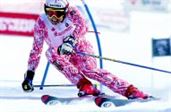 One of the toughest challenges we face in building a successful ski racing program is meeting the needs of today while also investing in the future.
One of the toughest challenges we face in building a successful ski racing program is meeting the needs of today while also investing in the future.
There are, in fact, three objectives in play to deliver success on the snow. The first is to ensure our very best athletes have what they need. The second is to work with the National Development Group and provincial teams to tactically guide the next generation of athletes toward the World Cup. And finally, the third is working with ski clubs across Canada to offer the highest standard of coaching and programs to foster an environment of excellence.
There’s no question that the number-one priority of Alpine Canada must always be ensuring the Canadian Alpine Ski Team has the resources necessary to compete with the world’s best.
This translates into manpower: employing the best coaches, sourcing top talent in physiotherapy and massage, building a close relationship with the ski industry through highly trained servicemen and finding uncompromising leaders in physical training. This team must then develop an environment of excellence both on the snow and off: looking for the best training opportunities year-round and designing training programs that meet the needs of our best ski racers.
These athletes live in a sea of change. They are growing through the final stage of physical and emotional maturity. In a short time frame, they move from competing in the familiar surroundings of the ski club, to facing the world’s best on unfamiliar territory in foreign lands. Quite literally, they must leap forward from start number 140 into the leading ranks of the Europa Cup or Nor-Am and make the transition look flawless.
It’s in this phase that the Canadian Alpine Ski Team and the provincial ski teams must work hand-in-glove. The transition from the provinces to “The Team” should not be seen as an enormous leap, but a smooth evolution.
The baseline of sustained success lies with ensuring that our ski club programs are strong from coast-to-coast. The common denominator is coaching. The key is utilizing the deep well of experience from coaches like Mark Sharp, national technical director and former national team head coach, to work with the Canadian Ski Coaches Federation to build a continuous stream of information, teaching and mentorship.
The Athlete Integration Model, better known as AIM, has been the guide used for nearly a decade to mould ski club programs across Canada. AIM produces good skiers, which is an admirable objective. But it’s not a blueprint to produce champion ski racers.
Thanks to an investment from Sport Canada, Alpine Canada has been provided a grant to aggressively pursue a new project dubbed AIM-2, or the Long-term Athlete Development model. We are working with leading coaches alongside sport science and child development experts to design the path of optimal athlete development.
The common theme across every level of athlete development is coaching. Canada is fortunate to have a respected, financially strong coaches organization.
The Canadian Ski Coaches Federation is going to play a key role in leading our athletes and building momentum for our sport today, tomorrow and long into the future.
Unlike pro sport, we don’t have the luxury of simply trading for new talent. Our future champions must be nurtured through optimal athlete development that ensures young aspiring Olympians have the coaching leadership, training access, quality competitions and tactical leadership to realize their potential.
We know we have the talent in Canada to succeed. One challenge is to remain focused on our athletes and give them the tools for success. The other is to not lose sight of the core goal of Alpine Canada and Canadian ski racing–to win.
This core objective starts right from the earliest ski programs and needs to be embraced at every level–providing the environment that fosters the relentless pursuit of excellence.